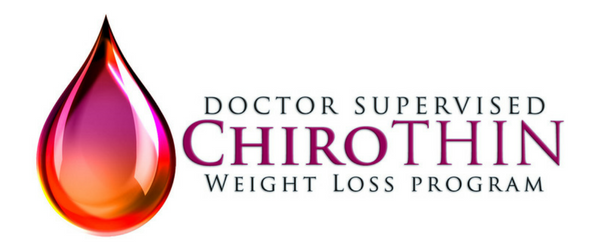
About 44% of people in North America are trying to lose weight. Globally, about two in every five people are trying to shed unwanted pounds, too. Unfortunately, a few small weight loss mistakes could have a major impediment on your own weight loss goals.
Here are 10 common mistakes to avoid while developing your own weight loss plans. With these tips, you can start shedding weight without stress.
Accomplish your weight loss goals with these tips today.
1. Focusing Only on the Scale
One of the easiest mistakes you can make while trying to accomplish your weight loss goals is only focusing on the scale. It’s normal to feel like you’re not losing weight “fast” enough. However, everyone loses weight on a different schedule.
Meanwhile, it’s normal for your weight to fluctuate day to day. Certain factors can impact the number you see on the scale, including fluid. The amount of food that remains in your system can cause fluctuations, too.
If your weight fluctuates about two to four pounds over the course of a few days, it’s normal.
Women experiencing hormonal changes can experience greater water retention, too.
If you’re working out, it’s likely you’re gaining muscle as you lose fat. Otherwise, the scale might not move if you’re losing fat mass while holding onto water.
Instead of paying attention to the number you see on the scale, consider measuring your waist with measuring tape. Take monthly pictures of yourself to track your progress, too. You might even notice your clothes are starting to feel looser (namely, around your waist), even if the number on the scale continues to fluctuate.
2. Not Exercising
You can exercise too much or too little if you’re not careful.
While losing weight, you could unintentionally lose muscle mass as well as fat. If you’re not exercising while restricting calories, you could lose more muscle mass. You might experience a decrease in your metabolic rate, too.
Developing a weekly workout schedule can help minimize the amount of lean mass you lose. It can also prevent your metabolism from dropping, allowing you to lose fat.
The more lean mass you have, the easier it will be for you to lose weight and maintain that loss.
Exercising too much could affect your endocrine hormones, causing more harm than good.
3. Eating Too Much (or Too Little)
In order to lose weight, you’ll need to plan a calorie deficit to ensure you burn more calories than you consume. The calorie deficit needed can vary from person to person, though.
People tend to incorrectly estimate the number of calories within a meal. You might not realize you’re eating too much or too little if you’re not tracking your daily calorie intake.
Don’t decrease your calorie intake too much, which could prove to be counterproductive. Consider visiting a ChiroThin doctor for help.
Protein
Make sure you’re eating enough protein with every meal. Protein can help:
- Protect muscle mass
- You maintain or increase your metabolic rate
- Increase feelings of fullness
- Reduce your appetite
- Lower the amount of weight you’ll regain
In addition to benefiting your appetite control, protein could also help improve your body composition. Make sure each meal contains a high-protein food.
Fiber
Viscous fiber can help reduce your appetite by moving slowly through the digestive tract to help you feel fuller longer. Fiber can also produce hormones to help you feel full.
All types of fiber can help promote weight loss.
Fat
Try to avoid eating too much fat if you’re on a low-carb diet. Otherwise, you could consume too many calories for a calorie deficit. Instead, make sure you’re tracking your daily calorie intake to avoid overeating.
4. Eating Too Often
One of the biggest weight loss mistakes you can make is eating too often, especially when you’re not hungry. Listen to your body and eat only when you’re hungry.
Otherwise, you could consume more calories than your body needs over the course of the day.
5. Not Tracking
Don’t forget to track what you eat to make sure you’re not exceeding your calorie deficit. Tracking your meals can help you determine how much protein, fiber, carbs, and fat you’re eating.
It can also help you remain accountable as you work to accomplish your weight loss goals.
As you begin tracking your meals, make sure to check the labels of each food you’re eating. Don’t believe every healthy-sounding claim you find on a food package. Instead, read the nutrition facts label and ingredients.
6. Neglecting Weightlifting
Don’t focus too much on cardio. Make sure to add resistance training to your weekly workout schedule, too.
Lifting weights is one of the most effective ways to increase your metabolic rate and gain muscle. It can also help improve your strength and physical function. Weightlifting could help you burn more belly fat, too.
Try lifting weights two to three times a week.
Here are a few exercises for losing weight that can also help.
7. Overestimating Calories Burned
You could overestimate how many calories you’re burning while exercising. Exercising won’t supercharge your metabolism, though it can benefit your metabolic rate a little.
Consider tracking how many calories you burn with a weight loss app. Tracking your efforts will help you determine how many calories you can consume per day. Otherwise, you might overeat, impacting your weight loss goals.
8. Eating Processed Foods
Instead of eating processed foods, try eating more whole, single-ingredient foods.
Processed foods can have a negative impact on your gut health and inflammation. Whole foods, on the other hand, are harder to overconsume.
It’s also easier to make sure you’re consuming the nutrients you need by choosing whole foods.
9. Not Drinking Water
As you pick up exercises for losing weight, it’s important to remain hydrated. Drinking water can also help you feel full throughout the day. Try drinking water about half an hour before each meal.
The water will take up more space in your stomach, allowing you to feel full before eating.
10. Having Unrealistic Expectations
Try to maintain realistic expectations as you begin your weight loss journey. Otherwise, feeling unable to meet a goal could impact your motivation levels.
Try to set a practical goal, such as losing one to two pounds each week.
Trim Down: Avoid These Weight Loss Mistakes and Shed Pounds Today
Don’t let these weight loss mistakes slow you down. Instead, make a plan to accomplish your weight loss goals this year. With a weekly workout schedule and food tracking, you can remain on track to slay your goals.
Are you ready to get started on the path to a healthier you?
Click here to find a ChiroThin doctor in your area.
